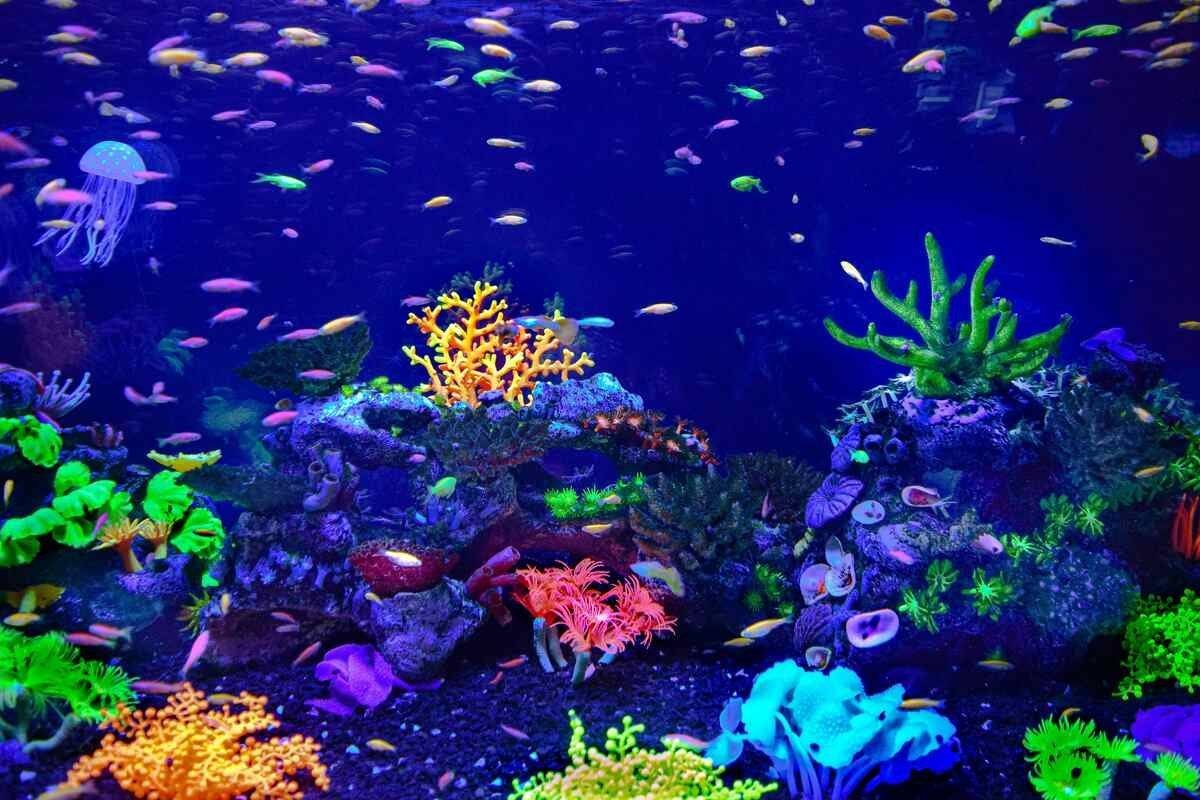Now Reading: Pernithia Galnith: Exploring Its Wonders and Challenges
-
01
Pernithia Galnith: Exploring Its Wonders and Challenges
Pernithia Galnith: Exploring Its Wonders and Challenges

Introduction: The Hidden Treasure of Nature
Nestled in an untouched corner of the world, Pernithia Galnith is an ecological marvel that continues to captivate scientists and nature enthusiasts alike. This vibrant ecosystem is home to a stunning array of flora and fauna, many of which are found nowhere else on Earth. But beyond its beauty lies a fragile balance—one that faces increasing threats from human activity and environmental changes. Understanding Pernithia Galnith is crucial not just for its preservation but for the broader ecological health of our planet. Let’s dive into what makes this region so special and why its conservation is more important than ever.
What Makes Pernithia Galnith So Unique?
1. A Haven of Biodiversity
Pernithia Galnith is a biological hotspot, teeming with diverse species that have adapted to its unique climate and geography. Among the highlights:
- Rare Orchids & Medicinal Plants: Many plants here have medicinal properties yet to be fully explored by scientists.
- Endemic Wildlife: Species like the Pernithian Sky Lizard and Golden-Hued Butterfly thrive only in this ecosystem.
- Migratory Birds: This region serves as a critical stopover for migratory birds, linking ecosystems across continents.
2. A Thriving Natural Landscape
The landscape of Pernithia Galnith is a breathtaking mix of dense forests, crystal-clear waterways, and rolling hills. The soil, rich in nutrients, supports diverse plant life, while freshwater sources sustain both wildlife and local communities. These interconnected elements create a delicate but vital balance in the ecosystem.
3. A Living Laboratory for Science
Scientists are drawn to Pernithia Galnith for its potential in ecological and pharmaceutical research. New species are frequently discovered, offering insights into biodiversity and natural medicine. The ecosystem also provides valuable data on climate change’s impact on fragile environments.
The Biggest Threats to Pernithia Galnith
Despite its significance, Pernithia Galnith is increasingly vulnerable to various environmental threats.
1. Habitat Destruction
As urbanization and agricultural expansion encroach upon the region, forests are being cleared, disrupting wildlife habitats and threatening biodiversity.
2. Pollution & Contamination
- Industrial waste: Pollutants from nearby industries seep into the soil and waterways, poisoning native species.
- Plastic waste: Irresponsible tourism contributes to pollution, harming both plant and animal life.
3. Climate Change & Its Impact
Changes in temperature and rainfall patterns are altering the ecosystem, leading to:
- Shifting migration patterns of birds and animals.
- Droughts and floods affecting plant growth.
- Increased vulnerability of species to disease and habitat loss.
4. Invasive Species
Non-native species introduced into Pernithia Galnith often outcompete indigenous wildlife, leading to imbalances that threaten native biodiversity.
Efforts to Protect Pernithia Galnith
Thankfully, conservation efforts are underway to safeguard this ecological wonder.
1. Conservation Initiatives
Environmental organizations are working to:
- Establish protected areas and nature reserves.
- Implement reforestation programs to restore lost habitats.
- Introduce strict anti-pollution laws to protect water and soil quality.
2. Community Involvement & Education
Local communities are playing a crucial role in preservation efforts. Programs focus on:
- Sustainable farming techniques to reduce deforestation.
- Eco-tourism initiatives that generate income while preserving nature.
- Workshops and awareness campaigns to educate people about the region’s significance.
3. Scientific Research & Monitoring
Scientists continue to study Pernithia Galnith, uncovering new species and tracking ecological changes. Their research informs conservation strategies and policy decisions.
4. Government Regulations and Policies
Stronger environmental policies and stricter law enforcement are necessary to ensure the long-term protection of Pernithia Galnith. Governments must work alongside conservationists to regulate industries, control pollution, and fund restoration projects.
How You Can Help Protect Pernithia Galnith
You don’t have to be a scientist or conservationist to make a difference. Here’s how you can contribute:
1. Raise Awareness
- Share information about Pernithia Galnith on social media.
- Write to policymakers urging them to support conservation efforts.
- Discuss its importance with family and friends.
2. Support Conservation Organizations
- Donate to or volunteer with groups dedicated to protecting Pernithia Galnith.
- Participate in conservation initiatives like tree planting and clean-up drives.
3. Adopt Sustainable Practices
- Reduce plastic use to minimize waste.
- Choose eco-friendly products to support sustainable industries.
- Travel responsibly, respecting natural habitats.
4. Stay Informed & Take Action
Stay updated on conservation news and get involved in efforts to protect endangered ecosystems. One great resource on sustainability and eco-conscious living is Eco Urban Bloom, a blog that explores innovative environmental solutions.
Other Ecological Marvels Worth Protecting
While Pernithia Galnith is unique, many other ecosystems also need urgent protection:
- Amazon Rainforest: The world’s largest tropical rainforest, vital for global oxygen supply.
- Great Barrier Reef: Home to incredible marine biodiversity, but threatened by coral bleaching.
- Galápagos Islands: A haven for unique species, facing challenges from tourism and climate change.
- World Wetlands: Essential for water purification and habitat conservation.
Each of these regions contributes to our planet’s ecological balance, just like Pernithia Galnith.
Conclusion
Pernithia Galnith is not just an ecological wonder—it’s a testament to the beauty and complexity of our natural world. However, its future hangs in the balance. The threats it faces demand immediate action from governments, conservationists, and individuals alike.
By advocating for its protection, supporting conservation efforts, and making sustainable choices, we can ensure that future generations get to experience the magic of Pernithia Galnith. Every small action contributes to a larger movement toward a healthier planet.
For more insights into sustainable living and environmental conservation, visit Eco Urban Bloom—your go-to resource for eco-friendly inspiration.
Featured Image by Dmitry Bukhantsov on Unsplash
FAQs About Pernithia Galnith
1. What is Pernithia Galnith?
Pernithia Galnith is a unique ecological region known for its rich biodiversity and rare flora and fauna. It serves as a vital habitat for many endemic species and plays a crucial role in maintaining ecological balance.
2. Why is Pernithia Galnith considered an ecological marvel?
Pernithia Galnith is home to diverse ecosystems, ranging from dense forests to pristine waterways. It houses rare medicinal plants, migratory bird species, and endemic wildlife, making it an important natural treasure.
3. What are the biggest threats to Pernithia Galnith?
The primary threats include habitat destruction due to deforestation and urbanization, pollution from industrial and plastic waste, climate change-induced alterations, and invasive species disrupting the local ecosystem.
4. What efforts are being made to protect Pernithia Galnith?
Conservation organizations, governments, and local communities are working together to establish protected areas, enforce anti-pollution laws, promote eco-tourism, and conduct scientific research to preserve the ecosystem.
5. How does climate change impact Pernithia Galnith?
Climate change affects the region by altering rainfall patterns, causing habitat loss, increasing the frequency of droughts and floods, and disrupting migration patterns of various species.
6. What role do local communities play in conserving Pernithia Galnith?
Local communities engage in sustainable farming, participate in conservation programs, and promote eco-friendly tourism. Educational initiatives also help raise awareness about the importance of protecting the region.
7. How can individuals contribute to the preservation of Pernithia Galnith?
People can help by spreading awareness, supporting conservation organizations, adopting eco-friendly practices, reducing plastic usage, and advocating for stronger environmental policies.
8. Are there any ongoing scientific studies in Pernithia Galnith?
Yes, scientists conduct research on biodiversity, climate impact, and medicinal plant properties. These studies help in formulating conservation strategies and understanding the ecological significance of the region.
9. What sustainable tourism practices can help protect Pernithia Galnith?
Responsible tourism practices include staying in eco-lodges, minimizing waste, following designated trails, respecting wildlife, and supporting local conservation efforts.
10. Where can I learn more about ecological conservation and sustainability?
For more insights on sustainability and eco-conscious living, visit Eco Urban Bloom, a blog dedicated to environmental awareness and innovative green solutions.










